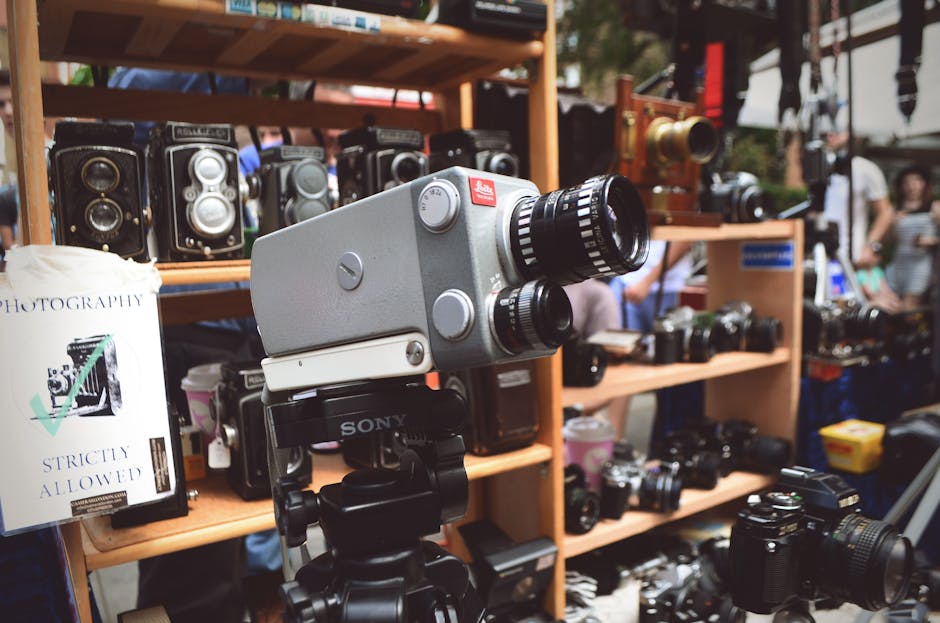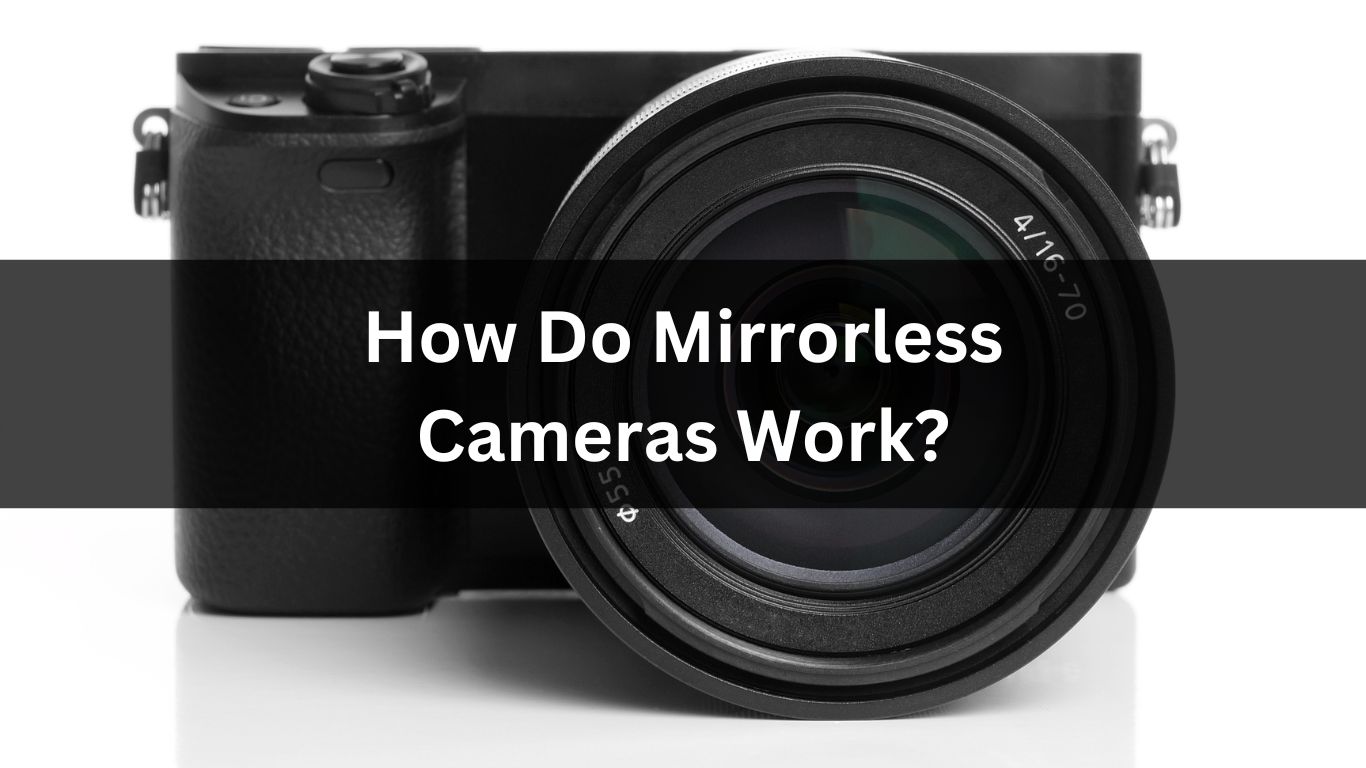Mirrorless cameras, also known as compact system cameras, work by using a digital sensor to capture light and create an image, without the need for a mirror to reflect light into an optical viewfinder. Instead, the image is displayed on an electronic viewfinder or the camera’s LCD screen.
In this guide, I will mentioned a proper idea how does mirrorless cameras work in details. So, let’s dive in–
 Source: pexels.com
Source: pexels.com
1. Image Sensor
The image sensor is one of the most important components of a mirrorless camera. It captures the light that enters the camera through the lens and converts it into a digital image. Unlike traditional DSLR cameras that use a mirror and optical viewfinder system, mirrorless cameras use an electronic viewfinder (EVF) or the camera’s LCD screen to display the image in real-time.
The image sensor in a mirrorless camera can be either a Micro Four Thirds (MFT), APS-C, or full-frame sensor. The size of the sensor affects the camera’s low-light performance, dynamic range, and overall image quality.
2. Lens Mount
The lens mount is the interface between the camera body and the interchangeable lenses. Mirrorless cameras come with various lens mounts depending on the camera brand and model. Some popular lens mounts include Sony’s E-mount, Canon’s RF mount, and Fujifilm’s X-mount.
The advantage of a mirrorless camera’s lens mount is that it allows for a wide range of lens options from different manufacturers. This versatility gives photographers the flexibility to choose lenses that suit their specific needs, whether it’s a wide-angle lens for landscape photography or a telephoto lens for wildlife photography.
3. Electronic Viewfinder (EVF)
As mentioned earlier, mirrorless cameras use an electronic viewfinder (EVF) instead of an optical viewfinder found in DSLR cameras. The EVF is essentially a small LCD screen located at the back of the camera or inside the camera’s eyepiece.
The EVF displays a real-time preview of the image based on the data captured by the image sensor. This allows photographers to see the exposure, white balance, and other settings before taking the shot. Some mirrorless cameras also offer additional information overlays in the EVF, such as a histogram or focus peaking, to assist with composition and focusing.
4. Autofocus System
Mirrorless cameras are known for their fast and accurate autofocus systems. Unlike DSLR cameras that use a dedicated autofocus sensor, mirrorless cameras use a hybrid autofocus system that combines both contrast detection and phase detection autofocus.
The contrast detection autofocus analyzes the contrast of the image on the image sensor, while the phase detection autofocus measures the difference in arrival times of light rays to determine focus. This combination allows for quick and precise autofocus, especially in continuous shooting or tracking moving subjects.
5. Electronic Shutter
One of the advantages of mirrorless cameras is their silent shooting capability, thanks to the electronic shutter. Instead of using a physical shutter mechanism like DSLR cameras, mirrorless cameras use an electronic sensor to control the exposure.
The electronic shutter works by electronically opening and closing the camera’s image sensor to capture the desired exposure. This eliminates the mechanical noise of the shutter, making mirrorless cameras ideal for situations where silence is required, such as in wildlife photography or during live performances.
6. In-body Image Stabilization (IBIS)
Many mirrorless cameras feature in-body image stabilization (IBIS) that compensates for camera shake and reduces blur in handheld shots. IBIS works by using sensor-shift technology, where the camera’s image sensor moves slightly to counteract any unintentional camera movement.
This technology allows photographers to achieve sharper images without relying solely on lens-based image stabilization. It also provides stabilization benefits when using non-stabilized lenses or adapting lenses from other camera systems.
7. Video Recording
Mirrorless cameras have become popular among videographers due to their ability to capture high-quality video footage. The absence of a mechanical mirror allows for continuous autofocus during video recording, resulting in smooth and accurate focus transitions.
Additionally, mirrorless cameras often offer advanced video features such as 4K recording, high frame rates, and various video profiles for enhanced creative control. Some models even include headphone and microphone jacks for professional audio recording.
8. Connectivity and Wireless Capabilities
Mirrorless cameras are equipped with various connectivity options for transferring images and remote control. Most mirrorless cameras have built-in Wi-Fi and/or Bluetooth capabilities, allowing for easy sharing of photos and videos to smartphones, tablets, or computers.
Some mirrorless cameras also offer NFC (Near Field Communication) for quick and seamless pairing with compatible devices. Additionally, certain models support tethered shooting, enabling photographers to control the camera settings and capture images remotely from a computer.
9. Battery Life
One consideration when using a mirrorless camera is the battery life. Due to the continuous use of the EVF and other electronic components, mirrorless cameras tend to consume more power compared to DSLR cameras.
However, advancements in battery technology have improved the battery life of mirrorless cameras over the years. It is still advisable to carry spare batteries, especially during extended shooting sessions or when traveling without access to charging facilities.
10. Accessories and Lens Adapters
Like DSLR cameras, mirrorless cameras offer a wide range of accessories to enhance the shooting experience. These accessories include external flashes, battery grips, remote controls, and more.
Additionally, mirrorless camera systems often provide lens adapters that allow photographers to use lenses from other camera systems. This opens up a whole new world of lens options and compatibility, expanding the creative possibilities for photographers who already own lenses from different brands.
Conclusion
Mirrorless cameras have revolutionized the world of photography with their innovative design and advanced technology. By eliminating the bulky mirror system found in traditional DSLRs, mirrorless cameras are able to offer photographers a more compact and lightweight option without compromising on image quality. Through the use of electronic viewfinders and sensor-based autofocus systems, mirrorless cameras provide instant feedback and precise focusing, allowing photographers to capture their vision with ease.
FAQs Of How Do Mirrorless Cameras Work? A Comprehensive Guide
How do mirrorless cameras work?
Unlike traditional DSLR cameras, mirrorless cameras do not have a mirror that reflects light into an optical viewfinder. Instead, they use a digital viewfinder or an electronic viewfinder (EVF) to display a real-time preview of the image. When you press the shutter button, the light passes through the lens and hits the image sensor directly, which captures the image.
Do mirrorless cameras have interchangeable lenses?
Yes, mirrorless cameras have interchangeable lenses, providing photographers with versatility and the ability to use different lenses for various shooting scenarios. These lenses can be attached and detached easily, allowing photographers to switch between wide-angle, telephoto, macro, and other specialized lenses. The lens mount on a mirrorless camera is designed to be compatible with various lens brands, giving users a wide range of options to choose from.
What are the advantages of using a mirrorless camera?
There are several advantages to using a mirrorless camera. Firstly, their compact size and lightweight design make them more portable, allowing photographers to carry them easily for extended periods without straining their shoulders or neck. Mirrorless cameras are also less noisy compared to DSLRs since they lack a mirror mechanism, making them ideal for situations where silence is required, such as weddings or wildlife photography.
Are there any disadvantages to using a mirrorless camera?
While mirrorless cameras have many advantages, there are also a few disadvantages to consider. One of the significant drawbacks is the shorter battery life compared to DSLRs. Mirrorless cameras consume more power due to the constant use of the electronic viewfinder and the image sensor for previewing and focusing. It’s advisable to carry spare batteries or a portable charger when using a mirrorless camera for extended periods or in situations where charging facilities may be limited.
Can I use my existing lenses with a mirrorless camera?
Yes, it is often possible to use your existing lenses with a mirrorless camera, depending on the lens mount compatibility. Many camera manufacturers offer lens adapters that allow you to mount lenses from other brands or DSLR lenses onto mirrorless camera bodies. However, it’s important to note that using adapters may affect autofocus performance or limit certain features, as they may not communicate seamlessly between the lens and the camera.

Nasir is our resident expert with 5 years of experience in business development and marketing strategies. With a keen eye for market trends and a knack for creating impactful campaigns, Nasir helps drive our vision forward with innovative solutions and data-driven insights. His articles provide valuable perspectives on navigating the ever-evolving world of business.

